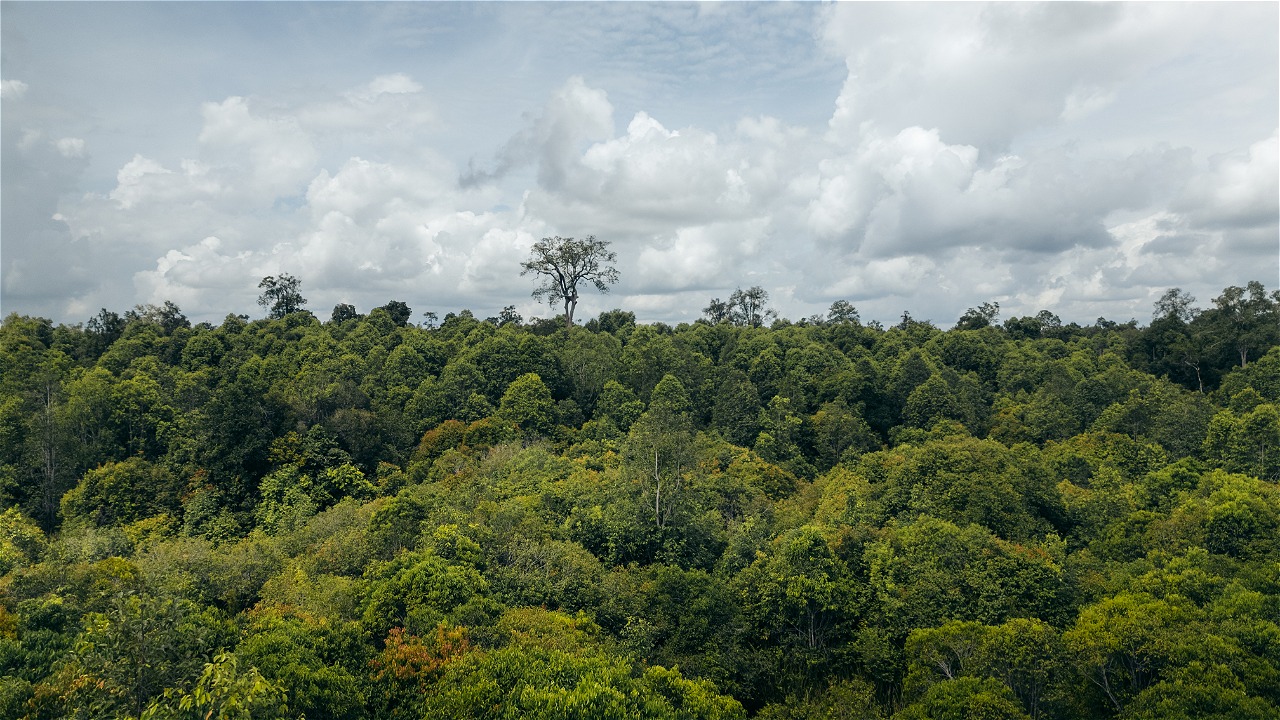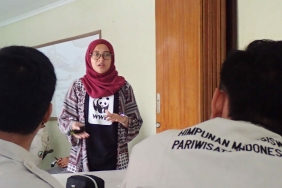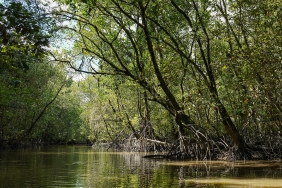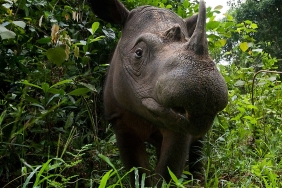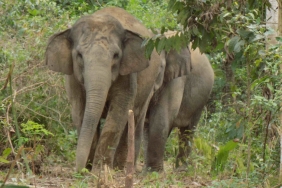LAMPEONG -GUNUNG MOSS PROTECTED FOREST PORTRAIT IN PHOTOGRAPHY EXHIBITION
By Tira Maya
Muara Teweh, Palangkaraya (13/09)- Photovoices International in collaboration with the North Barito District Government, North Barito HoB Working Group, HoB-WWF Indonesia and Gunung Lumut-Muller Foundation, on September 13-15, 2011 organized a photography exhibition and interactive discussion on "Portrait of Lampeong Protected Forest - Gunung Lumut in the Viewpoint of Local People".
The communities of Muara Mea and Berong, Gunung Purai-Barito Utara sub-district, captured the protected forest area, which is rich in biodiversity and is an important water catchment area to maintain the quality of the Barito River water volume through photography. The area is also a place that is highly sacred to the Kaharingan people who have very high cultural values.
The exhibition will also include an information-sharing workshop hosted by Palangkaraya University Social and Cultural Expert Dr. Usop Sidik Usop, with speakers from the North Barito District Government's DPRD & SKPD, the HoB Working Group, Photovoices International Director Ann McBride Norton, WWF-Indonesia Central Kalimantan Coordinator Rosenda Ch. Kasih, North Barito Kaharingan Religious & Customary Council, and representatives of Muara Mea and Berong communities.
In the opening ceremony of the exhibition and workshop, the Regent of North Barito expressed his high appreciation to the community for producing documentation and information that is very important to strengthen the Regent's recommendation to propose the Lampeong-Gunung Lumut Protected Forest as a National Park area and to synergize development planning at the local level with the future development planning of North Barito.
Photo exhibition at the North Barito Parliament Building which was held from September 13-15, 2011 by exhibiting hundreds of the best works of the community as a result of photovoices activities in Lampeong-Gunung Lumut HL, North Barito. In this exhibition and discussion, the community will convey the stories behind the photos produced, including the state of the environment and what is appreciated about traditional culture.
""They also tell us about social conditions, the quality of education and health, and the social capital we have, as well as challenges and hopes for the future,"" said Jaya Pura, Muara Mea Village Chief and one of the village photographers involved in the program. .
"Previously we never realized that photos are so important, but through this activity in addition to producing beautiful works of art, it is also a work that contains important information that can affect our future," said Yotam, a Berong village teacher photographer photovoices who produced many photos about nature and the environment in the Lampeong-Gunung Lumut HL area. For more information, please contact us.
While another fellow photographer, Mantung added, ""There are many things that we want to convey but it is very difficult to convey in words, through these photos we are greatly helped to explain about our traditional customs that are increasingly eroded by the times, and this documentation can be a lesson for future generations."
Photovices International Director Ann McBride Norton said that understanding a community's traditions and beliefs is important in developing sustainable development strategies and protecting natural resources. According to her, the most important thing about the community's extraordinary work is that it can provide important information for the government and can educate outsiders about biodiversity and community culture.
"It is hoped that this can foster solidarity between communities to understand each other and build understanding and accept cultural diversity as part of the wealth of all of us," said Ann. .
Meanwhile, WWF-Indonesia Central Kalimantan Program Coordinator Rosenda Ch. Kasih stated that the aspirations of local communities are important assets in formulating strategies and policies for sustainable natural resource management.
"Photovoices is one of the most effective ways to involve communities in the planning and development process through the visual and narrative information produced. WWF strongly believes that conservation programs and sustainable development efforts are one of the important spirits of the Heart of Borneo Program declared by 3 countries: Indonesia, Malaysia, and Brunei Darussalam can run well if all development actors are willing to learn from the knowledge and socio-cultural wisdom of local communities," he said.

